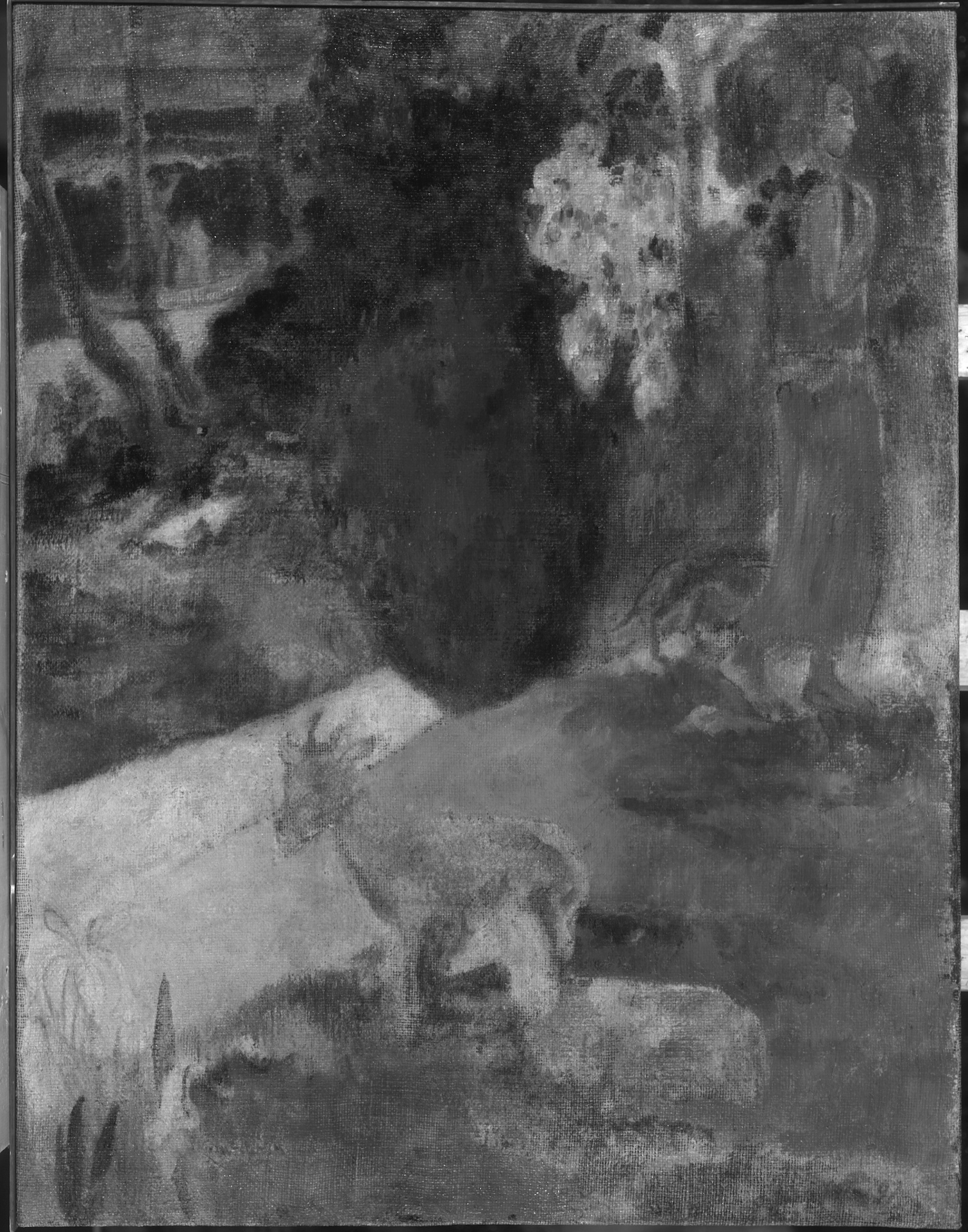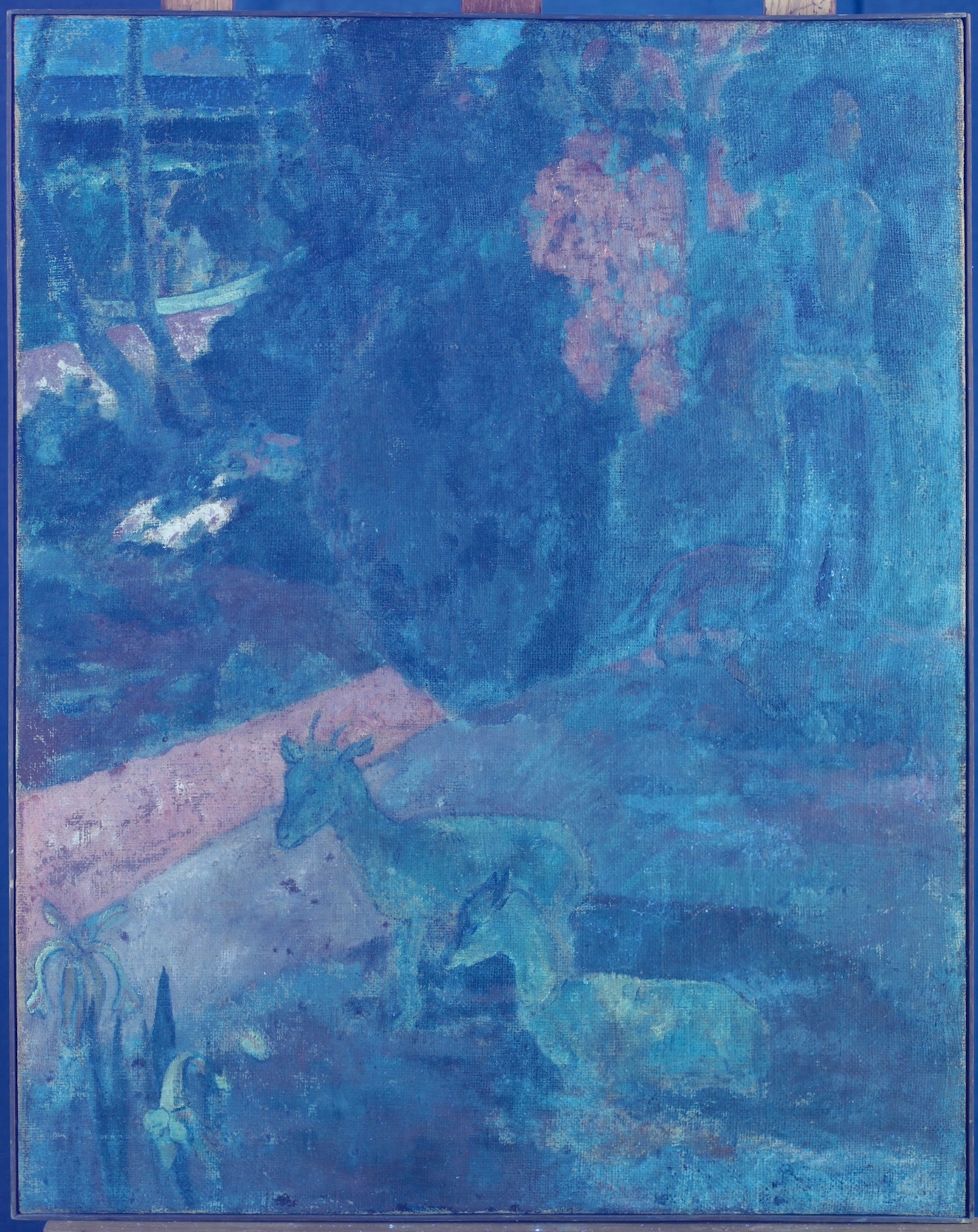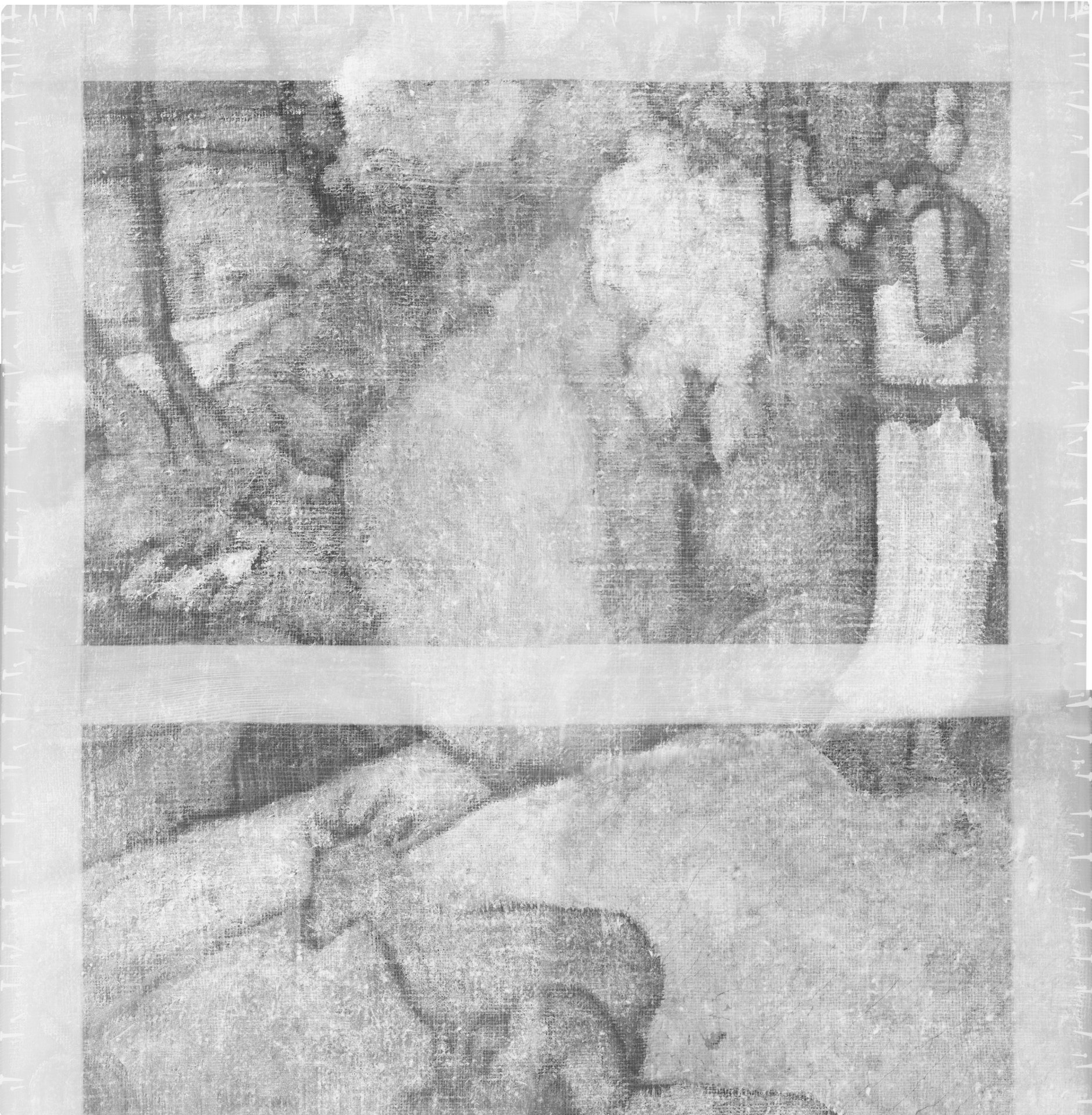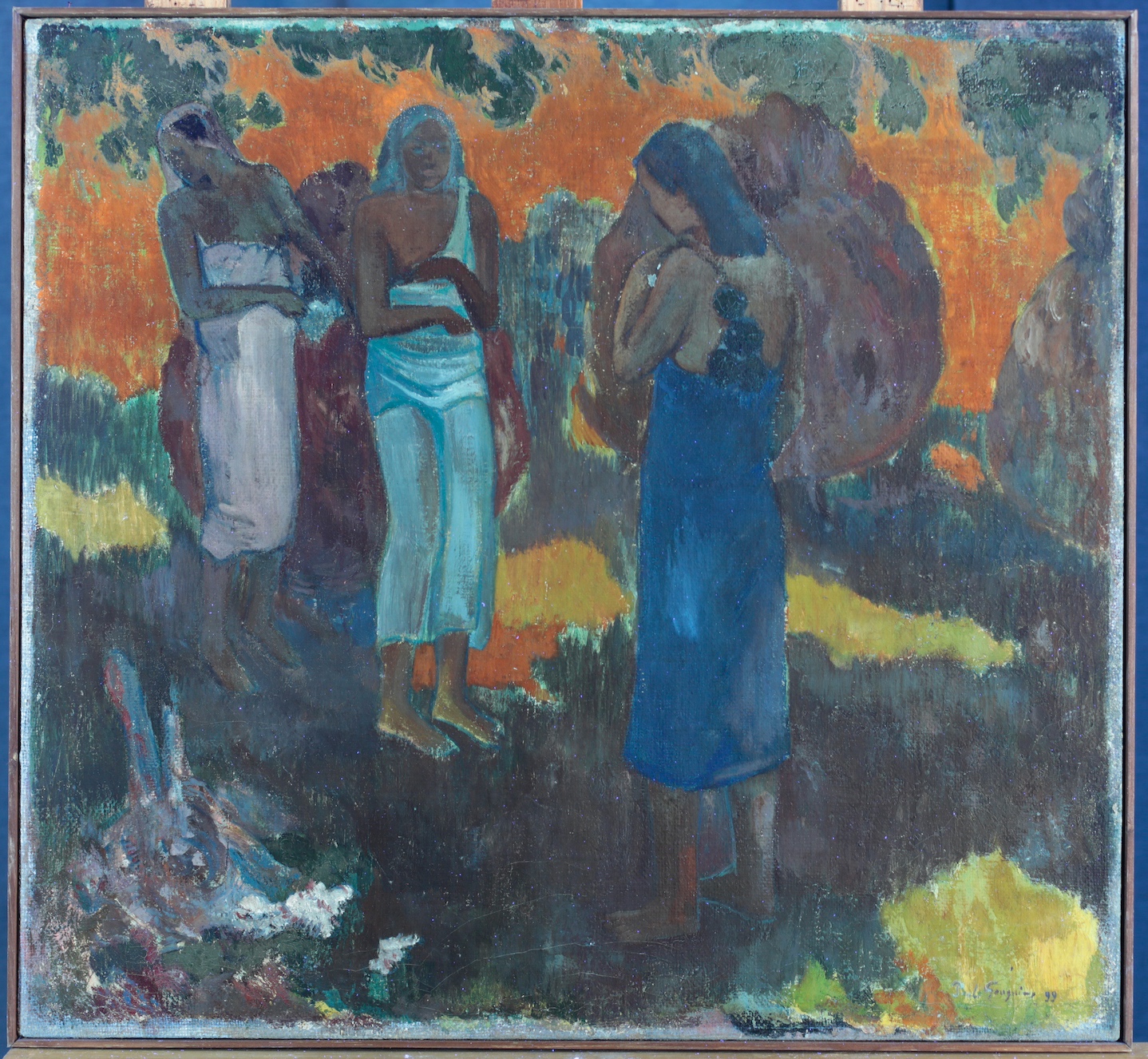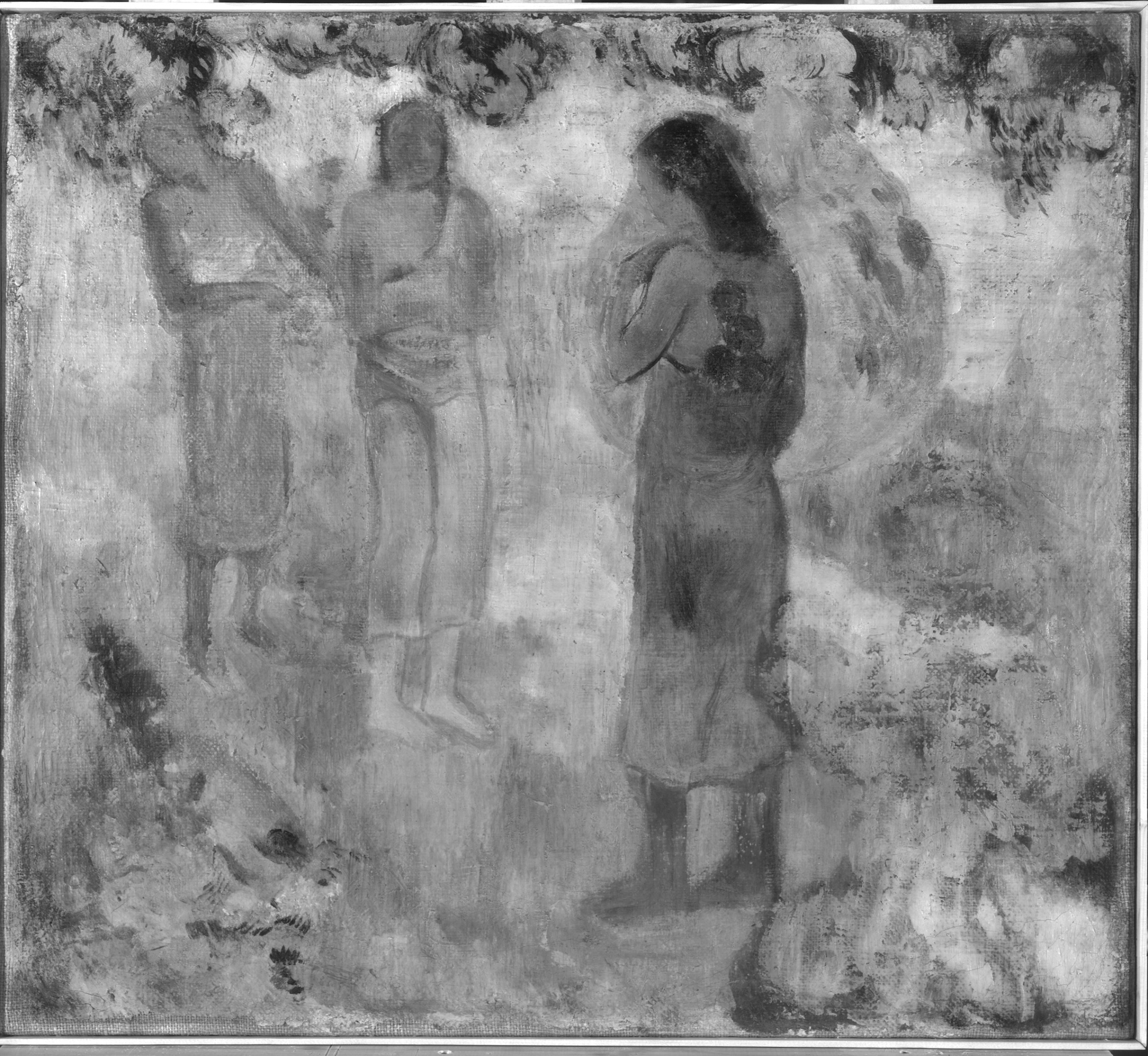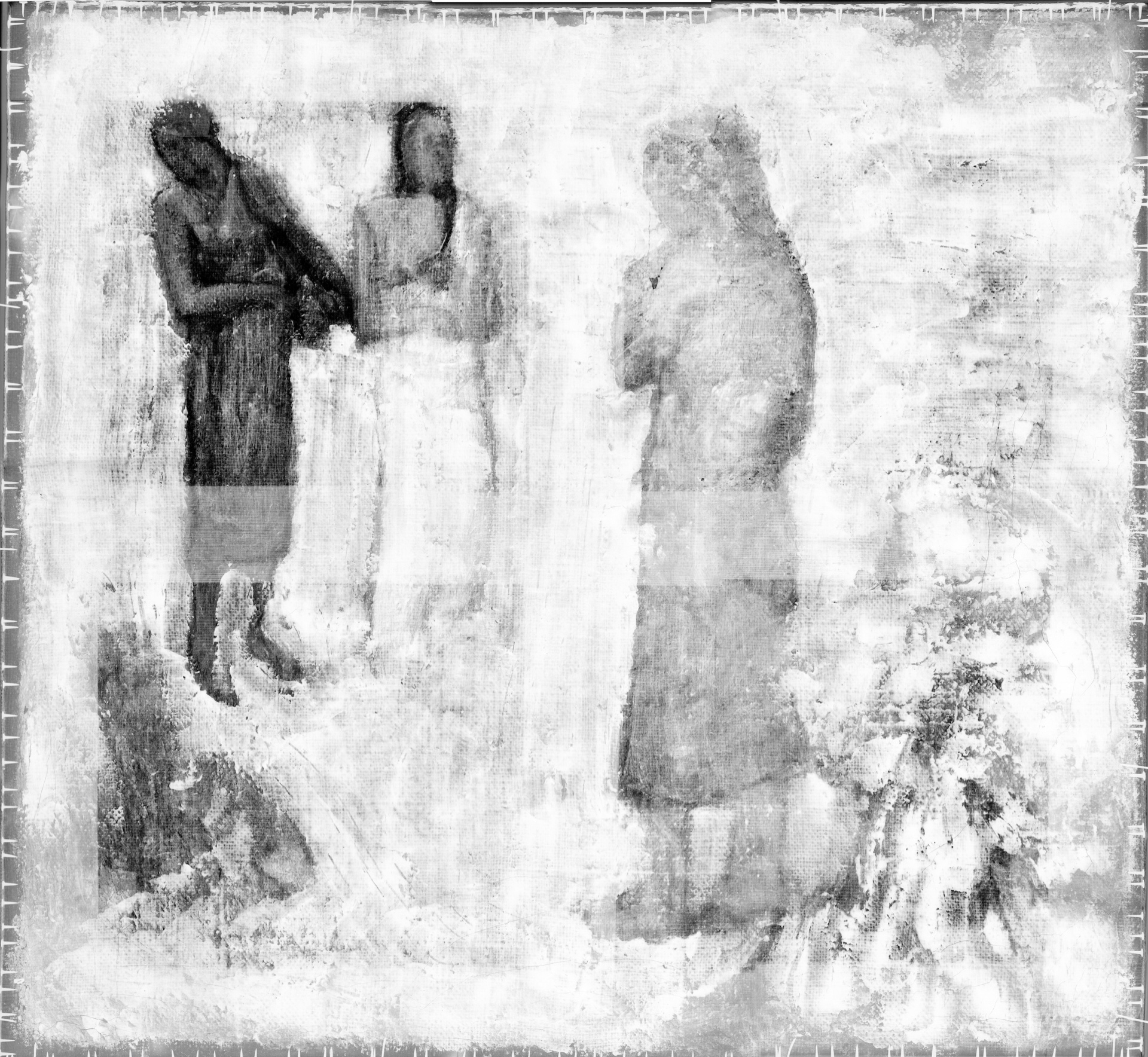Project for the study and restoration of two paintings by Paul Gauguin – Landscape with Two Goats (Inv. No ГЭ-7707) and Three Tahitian Women on a Yellow Background (Inv. No ГЭ-7708)
This project calls for the performance of a full range of research and restoration of two paintings by Paul Gauguin from the collection of the State Hermitage. The aim of the research is to investigate the painting technique, to determine the reasons for the paintings’ altered state of preservation and to develop a methodology for restoration. The chief problem lies in the fact that Gauguin’s way of painting in the Polynesian period was marked by technical and technological peculiarities. Practically every work differs on account of an individual experimental approach to the choice of material, which presents the greatest difficulty for the study and preservation of the pictures.
The Easel Painting Laboratory has modern analytical devices that make it possible to conduct a broad range of optical-physical and physical-chemical studies, including the use of ultraviolet and infrared light as well as X-rays, determining the composition of pigments, the primer, binder, coating varnish and later interventions. These studies will help to determine the causes of the changes that have taken place over time, to select the optimal restoration methods and take the measures necessary for the preservation of the painting.
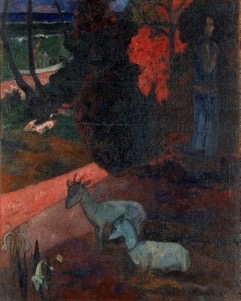
Oil on canvas. 92 × 73.5 cm. Inv. No ГЭ-7707
Bottom right, title, date and signature: Tarri mruri P. Gauguin 97
History of the Painting
The painting came into the State Hermitage in 1934 from the Antikvariat organization, having previously been in the State Museum of New Western Art.
In 1898 Gauguin sent the picture to George-Daniel de Monfreid in Paris, where from September to November that year it was shown in Georges Alfred Chaudet’s gallery. After that, the painting was in the possession of the famous Parisian art dealer Ambroise Vollard. It continued to change hands after coming to Russia, being first in the collection of Mikhail Morozov from 1899, then passing to his widow, Margarita, on his death in 1903. In 1910 Margarita Morozova donated the work to the Tretyakov Gallery. From 1925 it was in the stocks of the Museum of New Western Art.
State of Preservation
A study of archive documents revealed that Landscape with Two Goats was backed in 1965. The original canvas-weave support is open-meshed with knots and bulges, having 5 × 5 threads per square centimetre. The edges of the original canvas have survived. They are narrow, dilapidated and strongly impregnated with glue. There is widely-spaced cracking with a pronounced diagonal direction. Nails at the edge of the painting are causing tension, pulling strongly on the threads. The surface of the painting is coated with wax and a resin varnish with a non-uniform sheen.
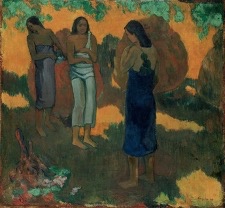
Oil on canvas. 68 × 74 cm. Inv. No ГЭ-7708
Signed and dated bottom right: Paul Gauguin 99
History of the Painting
The painting came into the State Hermitage in 1934 from the Antikvariat organization, having previously been in the State Museum of New Western Art.
The painting was in the Galerie Vollard from 17 October 1900, having been acquired from George-Daniel de Monfreid. From 28 October 1904 it was in Gertrude Stein’s collection in Paris, but returned to the Galerie Vollard on 21 January 1907 (as part of an exchange). On 13 May 1910, it joined the collection of Ivan Morozov, who bought it from Vollard for 10,000 francs. From 1918 it was in the Second Museum of New Western Art in Moscow, from 1923 in the combined State Museum of New Western Art.
State of Preservation
The painting is backed with thin canvas. The original support is coarse canvas-weave with knots and bulges, having 6 × 6 threads per square centimetre. The primer is white, unevenly applied, fairly dense in the central part of the canvas. Part of the depiction is bent over the upper edge of the stretcher. On the other three sides, there is no paint layer or primer within a centimetre of the edge. There is widely spaced cracking of varying character running through to the primer of varying character. The painting is covered with wax and heavily soiled. There are minor old losses and flaking of the upper paint layer down to the one below, mainly at the edges around the perimeter.
The project calls for work to be carried out in several stages:
- Determining the required combination of physical-chemical studies of the work prior to restoration with the aim of establishing the range of tasks needed for restoration. Carrying out the necessary studies. Assessing and developing methodologies and carrying out restoration and conservation measures in accordance with the assignment from the restoration commission. Drawing up accompanying restoration documentation.
- Reporting and publishing the studies and restoration performed. The outcome of the research and restoration work may lead to the organization of an exhibition that would present the works in question together with the results of the studies carried out.
A working group for the restoration of the painting has been formed from the staff of the State Hermitage:
Project curator – T.A. Baranova, head of the Department for Scientific Restoration and Conservation
Project co-ordinator – Ye.V. Feodorov, head of the Project Finance Sector
Scholarly supervisor – O.D. Leontyeva, keeper of 19th- and 20th-century French paintings
Researchers – K.B. Kalinina and S.V. Khavrin
Artist-Restorer – V.A. Korobov and A.V. Tsvetkov.
